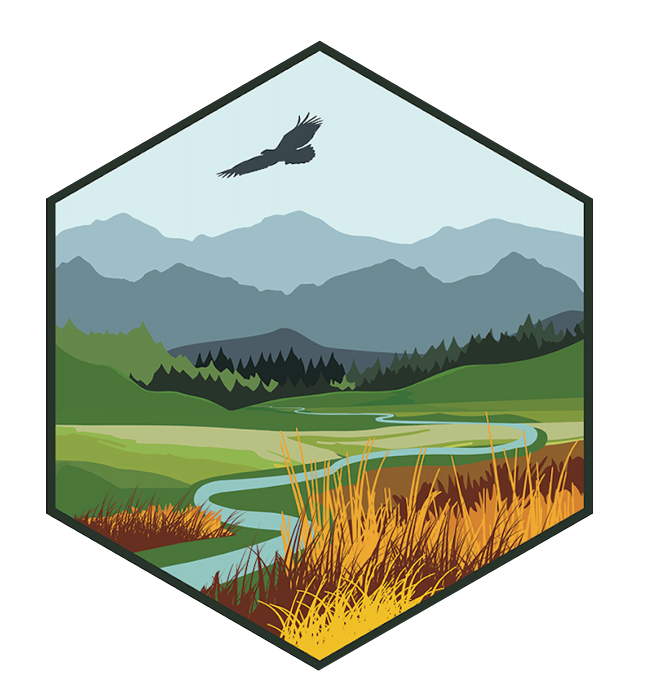Identifying areas expected to remain buffered from climate change and maintain biodiversity and ecological function (i.e., climate refugia) is important for climate adaptation planning. As structurally diverse transitional zones between terrestrial and aquatic environments, riparian areas are often biological hotspots and provide critical corridors for species movement, particularly in arid and semi-arid regions. In our study region in the western and central USA, identifying riparian areas that could serve as climate refugia is a priority for wildlife managers. We mapped areas with connected riparian habitats that, based on landscape diversity and projected changes in summer temperatures and landscape runoff, are expected to serve as climate refugia. To incorporate uncertainty and balance the need for near- and long-term planning, we mapped potential refugia for 2 future time periods (2040–2069, 2070–2099) based on 2 climate models that represented divergent but plausible climate outcomes. The approach we developed is not constrained by physiology or behavior of target species and can be used to identify areas expected to fare comparatively well under a wide range of future climate scenarios. Our approach can also be used to identify areas where restoration could increase riparian connectedness and climate resilience.
Piñon–juniper (PJ) woodlands are a dominant community type across the Intermountain West, comprising over a million acres and experiencing critical effects from increasing wildfire. Large PJ mortality and regeneration failure after catastrophic wildfire have elevated concerns about the long-term viability of PJ woodlands. Thinning is increasingly used to safeguard forests from fire and in an attempt to increase climate resilience. We have only a limited understanding of how fire and thinning will affect the structure and function of PJ ecosystems. Here, we examined vegetation structure, microclimate conditions, and PJ regeneration dynamics following ~20 years post-fire and thinning treatments. We found that burned areas had undergone a state shift that did not show signs of returning to their previous state. This shift was characterized by (1) distinct plant community composition dominated by grasses; (2) a lack of PJ recruitment; (3) a decrease in the sizes of interspaces in between plants; (4) lower abundance of late successional biological soil crusts; (5) lower mean and minimum daily soil moisture values; (6) lower minimum daily vapor pressure deficit; and (7) higher photosynthetically active radiation. Thinning created distinct plant communities and served as an intermediate between intact and burned communities. More intensive thinning decreased PJ recruitment and late successional biocrust cover. Our results indicate that fire has the potential to create drier and more stressful microsite conditions, and that, in the absence of active management following fire, there may be shifts to persistent ecological states dominated by grasses. Additionally, more intensive thinning had a larger impact on community structure and recruitment than less intensive thinning, suggesting that careful consideration of goals could help avoid unintended consequences. While our results indicate the vulnerability of PJ ecosystems to fire, they also highlight management actions that could be adapted to create conditions that promote PJ re-establishment.
Ecological transformations are occurring as a result of climate change, challenging traditional approaches to land management decision-making. The resist–accept–direct (RAD) framework helps managers consider how to respond to this challenge. We examined how the feasibility of the choices to resist, accept, and direct shifts in complex and dynamic ways through time. We considered 4 distinct types of social feasibility: regulatory, financial, public, and organizational. Our commentary is grounded in literature review and the examples that exist but necessarily has speculative elements because empirical evidence on this newly emerging management strategy is scarce. We expect that resist strategies will become less feasible over time as managers encounter situations where resisting is ecologically, by regulation, financially, or publicly not feasible. Similarly, we expect that as regulatory frameworks increasingly permit their use, if costs decrease, and if the public accepts them, managers will increasingly view accept and direct strategies as more viable options than they do at present. Exploring multiple types of feasibility over time allows consideration of both social and ecological trajectories of change in tandem. Our theorizing suggested that deepening the time horizon of decision-making allows one to think carefully about when one should adopt different approaches and how to combine them over time.
The Great Plains Tribal Water Alliance's Water and Climate Conference
New Cooperative Agreement to Advance Climate Adaptation in the Great Plains and Rocky Mountains
Contact Us
Want to see more? Do you have feedback? Was this site helpful? Send us an email!





